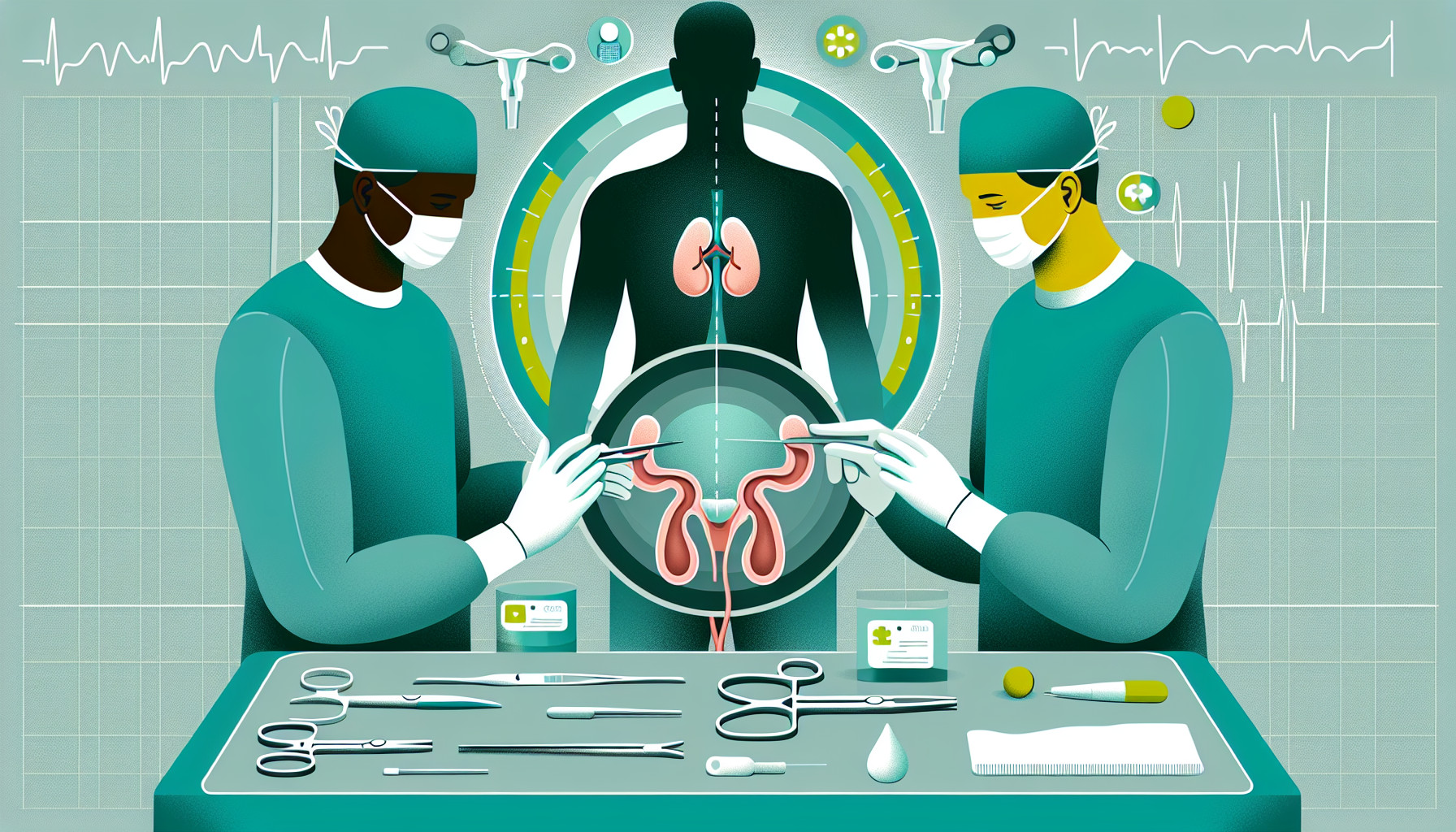Our Summary
This research paper is a comparison of two different surgical methods used to treat muscle-invasive bladder cancer: robot-assisted radical cystectomy (RARC - a minimally invasive surgical method) and open radical cystectomy (ORC - a traditional method). The researchers analyzed data from various randomized controlled trials to see if there were any differences in the outcomes for patients.
The main measure they looked at was whether or not the cancer recurred or progressed. They also looked at other cancer-related results, outcomes from the surgery itself, and any complications that occurred.
Their findings showed no difference between the two methods in terms of whether the cancer came back or got worse, how much cancer was removed during surgery, or how many lymph nodes were removed. There was, however, a significant difference in where the cancer recurred - either in the pelvic area or further afield in the abdomen. This result needs to be taken with caution, though, because of differences in how studies defined ‘recurrence sites’.
The study also found that while patients who had the robot-assisted surgery lost less blood, the surgery took longer. There was no difference in how long patients stayed in the hospital or the rate of complications after surgery between the two methods.
In conclusion, the study supports the use of robot-assisted surgery as a safe method for treating bladder cancer, but more research is needed to understand how the location of cancer recurrence might differ between the two surgical methods.
FAQs
- Are there any differences in outcomes between robot-assisted radical cystectomy (RARC) and open radical cystectomy (ORC) for muscle-invasive bladder cancer?
- What are the differences between RARC and ORC in terms of surgery-related outcomes and complications?
- Does the study conclude that one surgical method is superior to the other for treating muscle-invasive bladder cancer?
Doctor’s Tip
A doctor might advise a patient undergoing cystectomy to follow up closely with their healthcare team for monitoring and surveillance to catch any potential recurrences early. They may also recommend maintaining a healthy lifestyle, including regular exercise and a balanced diet, to support overall health and recovery after surgery. Additionally, it is important for patients to communicate any concerns or changes in their condition to their healthcare provider promptly.
Suitable For
Patients who are typically recommended for cystectomy are those with muscle-invasive bladder cancer that has not responded to other treatments such as chemotherapy or radiation therapy. Additionally, patients with high-risk non-muscle-invasive bladder cancer that is likely to progress to muscle-invasive disease may also be candidates for cystectomy. Other factors that may influence the recommendation for cystectomy include the patient’s overall health and ability to tolerate surgery, as well as their preferences and goals for treatment.
Timeline
Overall, the timeline of what a patient experiences before and after cystectomy includes:
- Initial diagnosis of muscle-invasive bladder cancer
- Consultation with a urologist to discuss treatment options, including surgery
- Pre-operative evaluations and tests to assess the patient’s overall health and determine the best surgical approach
- Surgery, either open radical cystectomy or robot-assisted radical cystectomy
- Recovery period in the hospital, which may involve pain management and monitoring for complications
- Follow-up appointments to monitor for cancer recurrence and discuss any ongoing treatment or care needs
After cystectomy, patients may experience changes in their urinary function and may require additional treatments such as chemotherapy or immunotherapy. It is important for patients to work closely with their healthcare team to manage any side effects and monitor for any signs of cancer recurrence.
What to Ask Your Doctor
What are the potential risks and benefits of robot-assisted radical cystectomy compared to open radical cystectomy?
How long does the recovery process typically take for each surgical method?
What are the differences in post-operative care and follow-up for patients who undergo robot-assisted radical cystectomy versus open radical cystectomy?
Are there any specific factors that would make me a better candidate for one surgical method over the other?
How experienced is the surgical team in performing robot-assisted radical cystectomy?
What is the expected impact on my quality of life after undergoing either surgery?
Are there any long-term effects or complications associated with either surgical method that I should be aware of?
How does the cost of robot-assisted radical cystectomy compare to open radical cystectomy, and will my insurance cover either procedure?
Are there any alternative treatment options I should consider before deciding on a cystectomy?
What is the likelihood of the cancer recurring or progressing with each surgical method, based on my individual case?
Reference
Authors: Satkunasivam R, Tallman CT, Taylor JM, Miles BJ, Klaassen Z, Wallis CJD. Journal: Eur Urol Oncol. 2019 Jul;2(4):443-447. doi: 10.1016/j.euo.2018.10.008. Epub 2018 Nov 16. PMID: 31277781
